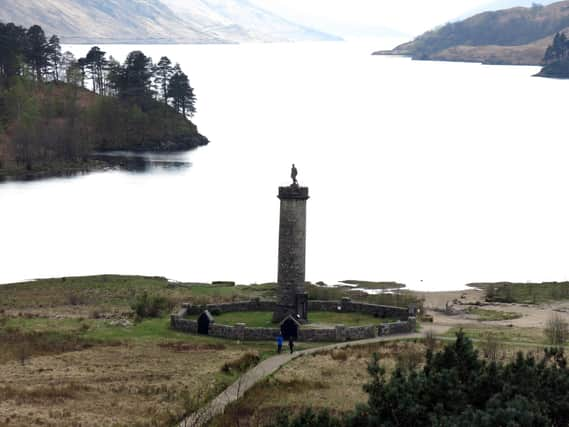On this day 1745 - Jacobite standard raised at Glenfinnan and rising declared


He had earlier rowed up Loch Shiel with the back-up of around 50 men from Clanranald before making his way to Glenfinnan for the ceremony, on August 19, 1745.
Word of his arrival in Scotland some 27 days earlier was well out, with both Government forces and some of Charles’ supporters taking their positions as he moved from the islands onto the mainland to launch his bid to return the Stuart family line to the British throne.
Advertisement
Hide AdAdvertisement
Hide AdBut after reaching Glenfinnan, not a single soldier-in-waiting for the Jacobite cause was to be seen. Despair quickly followed for the Prince.
“Charles, of course, expected to find a large ‘gathering of the clans’ in the vale awaiting his approach but to his great surprise, not a human being was to be seen throughout the whole of the extent of the lonely glen, except the solitary inhabitants of the few huts which formed the hamlet,” wrote James Browne in the 1852 series A History of the Highlands.
He was “chagrined and disappointed” and went into one of the huts to consider his position and the possible reasons that the clansmen failed to appear.
Browne added: "After waiting for about two hours in anxious suspense, he was relieved from his solicitude by the distant sound of a bagpipe...it soon became evident that a party was coming in the direction of the glen.”
A “dark mass” was then seen coming over the top of the hill. Clan Cameron, headed by Lochiel, was the first to arrive with around 600 men. MacDonald of Keppoch brought around 350 and MacDonald of Morar with roughly 150.
No further time was wasted. The Marquis of Tullibardine was given the honour of unfurling the standard and delivering a proclamation written by Chevalier de St George, the Prince’s father and self-appointed James VIII, which set out Charles’ position as the regent of Great Britain.
A manifesto was also read. It spoke of the “most constant affection to our ancient kingdom of Scotland, from whence we derive our royal origin” and the “deepest concerns (of) the miseries they suffer under a foreign usurpation.”
After the ceremony, the prince returned to his quarters with the Marquis of Tullibardine and the standard under an escort of around 50 Cameronns. Many more clansmen appeared throughout the night, according to Brown’s account.
Advertisement
Hide AdAdvertisement
Hide AdHe wrote: “Instead of the small party which joined him in the morning, Charles found himself within a few hours thereafter at the head of a body of about 1,200 brave and resolute men, warmly attached to his person and cause, and ready and willing to hazard their lives in his service.
"Charles was exceedingly delighted at the appearance of his little army, and it has been observed that at no other time did he look more cheerful or display a greater buoyancy of spirits.”
The 1745 Jacobite rising was underway.
A message from the Editor:Thank you for reading this story on our website. While I have your attention, I also have an important request to make of you.With the coronavirus lockdown having a major impact on many of our advertisers - and consequently the revenue we receive - we are more reliant than ever on you taking out a digital subscription.Subscribe to scotsman.com and enjoy unlimited access to Scottish news and information online and on our app. With a digital subscription, you can read more than 5 articles, see fewer ads, enjoy faster load times, and get access to exclusive newsletters and content. Visit https://www.scotsman.com/subscriptions now to sign up.
Our journalism costs money and we rely on advertising, print and digital revenues to help to support them. By supporting us, we are able to support you in providing trusted, fact-checked content for this website.
Joy Yates
Editorial Director